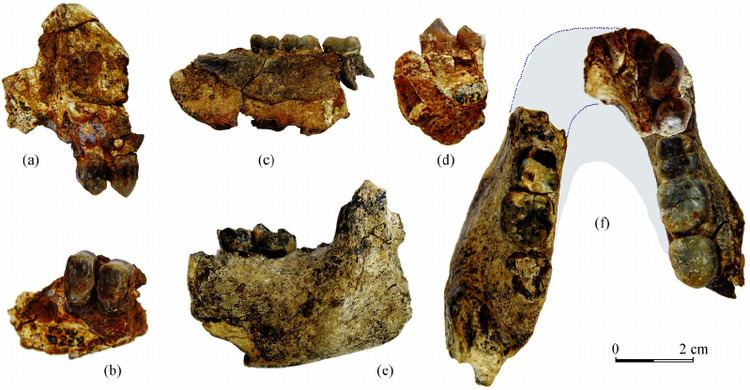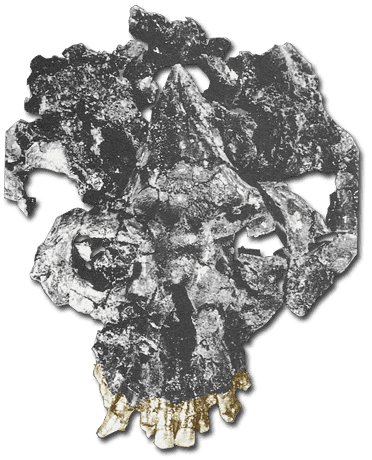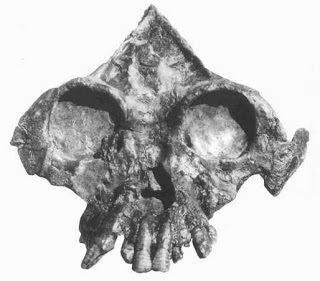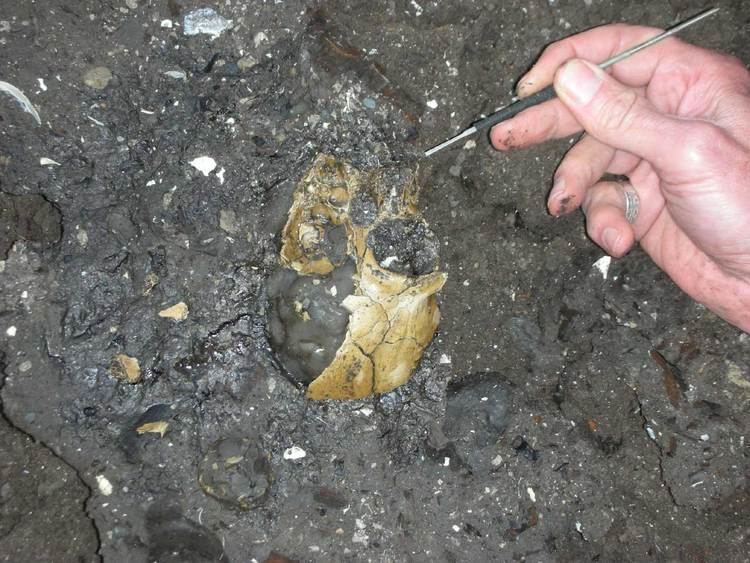Phylum Chordata Order Primate | Rank Genus | |
 | ||
Similar | ||
How to say lufengpithecus high quality voices
Lufengpithecus is a genus of extinct ape generally placed in the Ponginae subfamily. It is known from thousands of dental remains and a few skulls, it is a large ape thought to weigh about 50 kg (110 lb). It contains three species: L. lufengensis, L. hudienensis and L. keiyuanensis.
Contents
- How to say lufengpithecus high quality voices
- How to pronounce lufengpithecus
- Characteristics
- Lufengpithecus lufengensis
- Lufengpithecus hudienensis
- Lufengpithecus keiyuanensis
- References

How to pronounce lufengpithecus
Characteristics

Like Sivapithecus, Lufengpithecus has thick molar enamel and relatively low canine teeth, especially in females. The lower third premolars sometimes have a slight second cusp, denoting a shift from their principal role as cutting teeth in other ape species.

While Lufengpithecus is generally considered to be a primitive pongine by most Western observers, Chinese scientists have noted a set of features that are more reminiscent of hominines. These include a broad interorbital distance, an "African" subnasal morphology, frontal sinuses, and a number of dental similarities. Also, basicranial and postcranial remains indicate it may have had adaptations for a significant degree of bipedalism. The ultimate position of Lufengpithecus in hominoid phylogeny requires more research.

A single mandiblular fragment with P4 and M1 from the site of Longgupo in Sichuan, China, originally assigned to the genus Homo, has been argued to be similar to Lufengpithecus, suggesting the genus may have survived until as recently as two million years ago, possibly overlapping with both Gigantopithecus and ancient Pongo in the region. One of the original authors who assigned the Longgupo specimen to Homo has since reversed position and now considers it to be a "mystery ape".

A possibly related species from Thailand has recently been assigned to the new genus and species Khoratpithecus chiangmuanensis. This species is known only from teeth, but these appear to be intermediate in morphology between Sivapithecus and recent orangutans. At 10 million years old, the fossils may be ancestral to later Pongo. In 2004, the lower jaw and teeth of K. piriyai dated between 9 and 7 million years were described as a potential orangutan ancestor.
Lufengpithecus lufengensis

Lufengpithecus lufengensis is a fossil ape recovered from lignite (soft coal) beds at the Shihuiba Locality in Lufeng County, Yunnan, China, dating to the latest Miocene. It was originally thought to represent two distinct species, Sivapithecus yunnanensis, thought to be an ancestor of Pongo (orangutans), and Ramapithecus lufengensis, thought to be an early human ancestor. The recognition in the 1980s that "Ramapithecus" fossils were females of Sivapithecus led to the creation of the new genus and species Lufengpithecus lufengensis to accommodate the large collection of hominoid fossils recovered at Lufeng in the 1970s. The species was recognized to have a very large degree of sexual dimorphism, more comparable to that seen in cercopithecoid monkeys than in any living ape. The fossil remains from Shihuiba included a number of relatively complete but severely crushed crania of both male and female specimens.
Lufengpithecus hudienensis
In the 1980s and 1990s similar fossils were excavated from a number of localities in Yuanmou County, Yunnan, China, generally attributed to a new species L. hudienensis. The specimens include a large number of teeth, mandibular and maxillary fragments and the facial skeleton of a juvenile, comparable in dental age to the famous Taung infant australopithecine from South Africa.
Lufengpithecus keiyuanensis
Previous hominoid material collected in the 1950s at the Keiyuan colliery site in Yunnan and attributed to Dryopithecus keiyuanensis were subsequently assigned to L. keiyuanensis.
